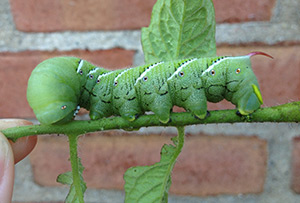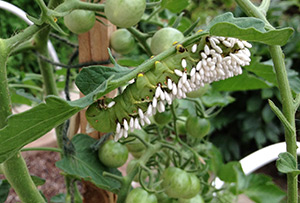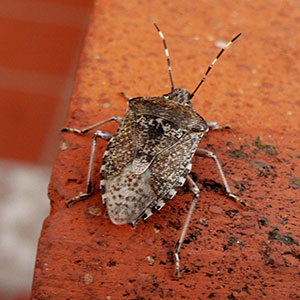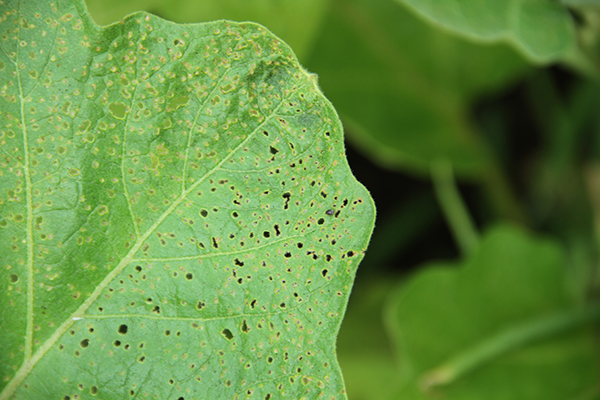Tomato Talk
A Full Season of Tomato-Growing Information
Diseases & Pests, Part 2
Know what pests and diseases look like to troubleshoot before they get in your garden beds. Want to plant disease-resistant varieties? Check out Cornell University's list of disease-resistant vegetable varieties.

Tomato hornworm caterpillar

A parasitized caterpillar host bearing wasp cocoons
Tomato hornworm caterpillars—(and tobacco hornworm caterpillars)—can do considerable damage in just a day or two. They blend in so well that they often go unnoticed until the gardener discovers tomato stems stripped of their leaves. They tend to hide during the day and are active in the early morning and again at night. In spring, the first batch of hornworms complete their life cycle: they eat, pupate, and emerge as moths commonly called hawk, sphinx, or hummingbird moths. A second generation of caterpillars drop off the plants and burrow into the soil, where they spend the winter as brown pupae. They are best dealt with by picking them off by hand. (Otherwise, you could follow their life cycles into beautiful hawkmoth butterflies.)
Mother Nature often helps out as well. Tiny parasitic braconid wasps lay their eggs in a hornworm. As they grow, the larvae eat the host caterpillar's insides and then burrow out of the caterpillar, creating fuzzy, white cocoons on its skin. If you notice a hornworm with white cocoons all over, place it on the ground. The eggs will hatch and eat the caterpillar—it’s nature’s free pest control.
Black flies, white flies, spider mites, and stink bugs can also pester plants. Check the leaves, stems, and fruits a few times a week to uncover pests before their populations explode. Fill a bucket with a few inches of soapy water (dish detergent will do) and bring it into the garden. Stink bugs and Japanese beetles tend to drop and hide when disturbed. Gently shaking the stems over the bucket will dislodge the pests.

Stink bug

Aphids
Many garden centers offer yellow “sticky traps” to catch flying insects such as white flies. The traps can be placed around or between the plants. Healthy plants can often withstand occasional insect attacks. Continue to water, mulch, and weed for a harvest that lasts until September.
Aphids are slow-moving insects that are often found on the underside of leaves where they suck plant juices. A handful of the pests can quickly become hundreds covering leaves and stems. The insects can also spread cucumber mosaic virus, which causes mottled ferny foliage on tomato plants. A strong stream of water from the hose can wash them from the plants. Insecticidal soaps available at garden centers can also be used to control them.

Flea beetle damage to a leaf
Flea beetles damage tomato plants by eating tiny holes in leaves. They generally do not kill tomato plants, but may carry viruses from one tomato to another. Many gardeners plant mustard or radish near tomato crops to draw these pests away from their tomato plants.

